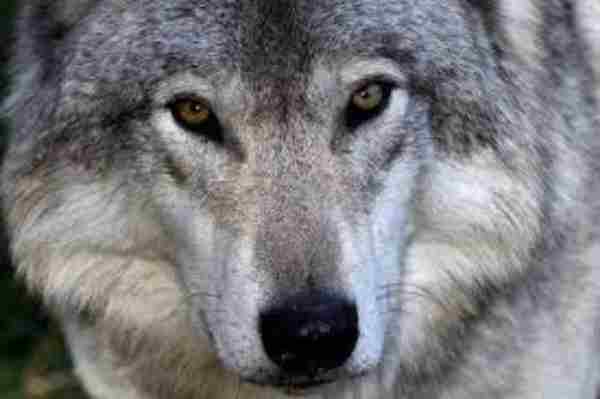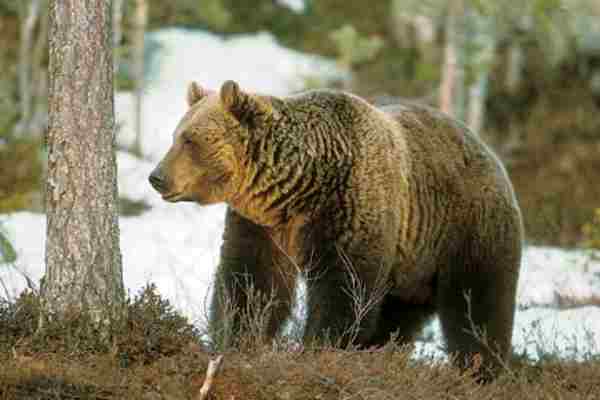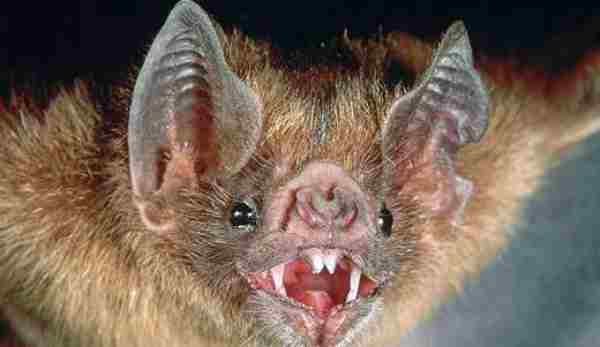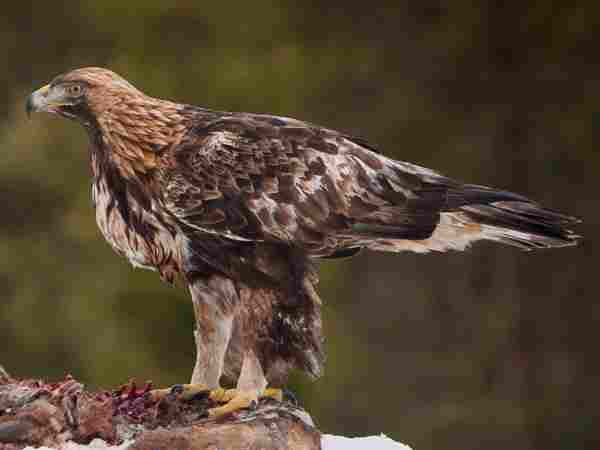Italy is a country famous for its incredible natural beauty. However, it’s underrated for its exceptional wildlife. Did you know that Italy is home to more than 100 mammal species? Among these, the European snow vale, alpine marmot, Eurasian lynx, Italian wolf, and Marsican brown bear are some of the most popular and unique species that roam Italy’s vast terrain.
Table of Contents
The Italian coastline is equally fascinating, where you may be lucky enough to spot playful dolphins or even the elusive Mediterranean monk seal. The stunning natural beauty of Italy and its remarkable wildlife make it an ideal destination for nature lovers and adventurers alike.
About Italy
Italy is an enchanting land filled with myriad stunning contrasts, from soaring mountain ranges to breathtaking coastlines. The country boasts some of the most awe-inspiring cities in the world, with Florence, Rome, and Milan serving as the perfect hub for your travels. Tour the ancient ruins, marvel at the art pieces in excellent museums, and bask in the beauty of the natural scenery. Italy is a place that captures the essence of your imagination and ignites a sense of awe-inspiring wonder.
Climate
Italy’s climate is a quintessential Mediterranean one, characterized by hot, dry summers and cool, wet winters. In the cooler months, the north and mountainous regions experience humid and cool weather, often with snowfall in higher altitudes. Come summertime, the winds bring forth scorching temperatures, which can even reach the northern districts of the country.
For those planning a trip to Italy, it’s important to consider the peak seasons of Jan-Feb and Jul-Aug, which are popular but also come with higher prices. If budget is a concern, the off-season of May and Sept-Nov might be more appealing, with lower prices and fewer crowds.
Wildlife in Italy
Italy is a wildlife lover’s paradise with over 100 mammal species making their home within its borders. From the small alpine marmot scurrying around mountainous regions to the regal Eurasian lynx lurking in the shadows, there are countless opportunities to observe the majestic creatures that call Italy home.
The Italian wolf and Marsican brown bear, both rare and endangered, can also be spotted in select regions throughout the country. Coastal regions offer a chance to catch a glimpse of playful dolphins and the elusive, yet adorable, Mediterranean monk seal.
With 24 national parks and an impressive 1.5 million hectares of land protected, Italy is committed to preserving the natural beauty its wildlife represents, accounting for 15% of the national terrain. The Gran Paradiso National Park, Dolomiti Bellunesi National Park, and Abruzzo, Lazio, and Molise National Park are just a few examples of the breathtaking nature reserves on offer.
Italian Wolf

The Italian wolf, also known as the Apennine wolf, is a subspecies of grey wolf that is indigenous to the Italian Peninsula. It primarily inhabits the Apennine Mountains and the Western Alps, but there is evidence of its expansion towards the north and east.
Symbolically, the Apennine wolf holds great significance for Italy as it is the country’s national animal. Its symbolism traces back to the ancient mythological tale of Romulus and Remus. According to legend, these twin brothers were discovered and nurtured by a she-wolf who nursed them with her milk. Eventually, the twins were adopted and raised by humans, and they went on to establish the city of Rome.
At one point in history, the population of Italian wolves had dwindled to a critical point, with only about 70 individuals remaining. However, through the combined efforts of public and private conservation initiatives, the species has experienced a significant recovery. Currently, there are an estimated 600 to 700 Italian wolves thriving in their natural habitat. These conservation efforts have played a vital role in ensuring the survival and return of this subspecies of grey wolves to Italy’s landscape.
Marsicun Brown Bear

The Marsican brown bear may not be a household name, but this critically endangered subspecies of the Eurasian brown bear is an animal worth knowing. With a range limited to the Parco Nazionale d’Abruzzo, Lazio e Molise in Italy, this bear population has faced numerous threats to its survival, including habitat loss and hunting. Efforts to protect the bear and its habitat have been ongoing, and progress has been made to increase the population over recent years.
Sardinian Long-eared Bat

The Sardinian long-eared bat is a fascinating species that can only be found on the island of Sardinia, Italy. It wasn’t until 2002 that scientists discovered this bat species living in the caves of central Sardinia. While bats primarily prey in the surrounding forests, their population has unfortunately decreased, causing them to be listed as a vulnerable species.
It’s disheartening to think this bat may be the last surviving endemic mammal on Sardinia Island. Some suggest that the arrival of humans nearly 9000 years ago caused the extinction of other bat species, leaving the Sardinian long-eared bat with a unique status.
Wildlife in Italy: Corsican Hare

The Corsican hare, also known as the Apennine or Italian hare, is a fascinating species that can be found in various habitats in southern and central Italy as well as Corsica. From maquis shrubland to grassland and cultivated areas, the Corsican hare is a versatile creature that has adapted to living in a range of environments.
Interestingly, the hare is widespread in Sicily, reaching elevations of up to 2400 meters on Mount Etna. Despite its ability to thrive in a variety of conditions, the Corsican hare’s range on mainland Italy is more fragmented and patchy, extending as far north as Tuscany on the west coast and Foggia on the east.
Wildlife in Italy: Lynx

The Eurasian lynx holds the distinction of being the third largest predator in Europe, following the brown bear and the wolf, and it is the largest among the four lynx species. Its physical characteristics include a short body, long legs, and large feet. Notably, its ears are adorned with a distinctive black tuft at the tip, while its paws boast sharp retractile claws.
Ecologists have raised concerns about the potential decline in Eurasian lynx populations in some areas of their range due to habitat loss and reductions in prey populations. Currently, it is estimated that there are more than 45,000 Eurasian lynxes worldwide, and since 2002, the species has been classified as “near threatened” by the International Union for Conservation of Nature (IUCN).
In a remarkable development, after nearly a century of being declared extinct in central Italy, the lynx is believed to have made a comeback. There are indications of its presence in the region, and other groups are potentially living in southern Italy. However, it is important to note that in Italy, lynxes have not yet established a robust population, despite suitable habitats being available from the southwestern to the eastern Alps. Conservation efforts remain crucial to ensuring the successful recovery and protection of this magnificent predator in Italy and its broader European range.
Wildlife in Italy: Ibex

Ibex are a group of sturdy and sure-footed wild goats belonging to the genus Capra in the family Bovidae. They are found in the mountainous regions of Europe, Asia, and northeastern Africa. These magnificent creatures are characterized by their large recurved horns, particularly prominent and ridged in males.
At one point, the Alpine ibex population was limited to the Gran Paradiso National Park in northern Italy and the Maurienne Valley in the French Alps. However, efforts were made to reintroduce the species to various parts of the Alps. Reintroduction initiatives began in Switzerland in 1906, and since then, Alpine ibex populations have been successfully established in several areas across the Alps. These conservation efforts have played a vital role in expanding the range of the species and ensuring its survival.
Wildlife in Italy: Corsican red deer/ Sardinian Deer

The Corsican red deer, also referred to as the Corsican or Sardinian deer, is a unique subspecies of the red deer found only in the Mediterranean islands of Corsica and Sardinia. What sets them apart from their counterparts is their slightly smaller antlers that can grow up to 80cm in length.
If you happen to be in the region from August to November, you’re in luck. This period marks the mating season and if you’re lucky, you could catch sight of male deer trying to woo mature females by fiercely battling each other. Typically, there are about a dozen female deer per male, making for an interesting spectacle to witness.
Wildlife in Italy: Golden Eagles

Golden Eagles are an intriguing species that owe their name to the golden hue of their head and neck feathers. These magnificent birds are known for their power and agility, capable of reaching impressive speeds while in flight.
Their wide distribution is another fascinating characteristic. Golden Eagles roam across much of western North America, from Mexico up to Alaska.
While they are a relatively uncommon sight in the East, they can still be found there. In addition to their presence in North America, the Golden Eagle also inhabits regions of Europe, northern Africa, and Asia.
Wild Boars

In the past decade, Italy has seen a significant increase in the number of wild boars, reaching a figure of 2 million. Known in Italy as “cinghiale,” this animal is widely hunted and consumed in various dishes, from pasta to sausages. Interestingly, despite their wild nature, the wild boar is closely related to the domestic pig.
Among the areas most densely populated by these creatures is the province of Genoa, with an estimated ratio of 25 boars per 10 sq km. These statistics, released by Coldiretti, highlight the growing prevalence of wild boars in Italy and the impact that they have on the country’s people and culture.
Mediterranean Monk Seals

The Mediterranean monk seal, once a common sight in the waters of the Mediterranean, is now a critically endangered species. With a population estimated to be less than 700 globally, efforts to protect and conserve the monk seal have become increasingly urgent. Just 100 of these beautiful creatures call the coastline of Turkey home. The monk seals are seldom seen in the Marmara and the Black Sea, but they are most commonly found near Foca, on the Aegean coast.
National Parks in Italy
Italy’s national parks represent the country’s truly natural, cultural, and historical heritage. In Italy, there are 24 beautiful national parks for visitors to discover.
National Park of Abruzzo: mountain habitat for bears and wolves
Nestled within the stunning Apennine Mountains lies Italy’s oldest national park – Abruzzo, Lazio, and Molise National Park. Established in 1923, this breathtakingly beautiful park mostly covers the Abruzzo region but also features smaller parts of Lazio and Molise.
The park is of utmost importance in preserving some of Italy’s most intriguing species, such as the Italian wolf and the Abruzzo brown bear. Additionally, the park is home to a plethora of well-featured wildlife such as red deer, roe deer, wild boar, and the white-backed woodpecker. With its rich flora and fauna, Abruzzo, Lazio, and Molise National Park is a hiker’s paradise and a must-visit destination for those who appreciate nature’s beauty and diversity.
Gran Paradiso national park: Alpine Trails and garden routes
The Gran Paradiso National Park is a stunning natural wonder that has been established by the State to ensure the protection of the precious ecosystems in the area. Not only does this park play an instrumental role in safeguarding the unique flora and fauna found here, but it also serves as a critical resource for the surrounding valleys. By preserving this incredible landscape, we are not only securing a home for countless species but also ensuring that this natural wonder continues to astound visitors for years to come.
Majella national park: mountains and wildlife
Nestled in the heart of Abruzzo, Italy is the stunning Majella National Park. This incredible park spans three provinces, including Chieti, Pescara, and L’Aquila. The park is named after the Maiella massif, which forms its central focus. At an astonishing 2,793 meters, Monte Amaro is the park’s highest peak, offering breathtaking views and numerous hiking opportunities for the adventurous traveler. Additionally, visitors have access to an extensive trail system, stretching over 700 km, with hikes ranging from short walks to multi-day treks.
Stelvio National Park: Alpine valleys
Stelvio National Park, located in the heart of the stunning central Alps, is hailed as one of the most picturesque protected areas in Italy. A must-visit destination for nature enthusiasts, the park is home to the Passo dello Stelvio, a high-altitude mountain pass that boasts some of the most breathtaking panoramic views of the region. Visitors will marvel at the peace and tranquillity that envelops them as they walk along the nature trails that crisscross the scenic landscape dotted with WWI military ruins.
FAQs
What kind of wildlife is in Italy?
Italy offers a unique and diverse range of wildlife, both in its sprawling national parks and in the untamed countryside. From the majestic Apennine Mountains to the rugged islands of Sardinia, Italy is home to iconic species such as the wolf, brown bear, and chamois, along with a rich variety of other native mammals, birds, and reptiles.
What is the biggest predator in Italy?
Brown bear
Where is the best place for wildlife in Italy?
Nestled amidst the stunning natural landscape of the Ligurian, Dolomite, and Abruzzo Apennine mountain ranges, these national parks host a fascinating variety of Central and Southern European wildlife, including wolves, wildcats, eagles, ibexes, and lynxes. Some of the popular national parks include the Abruzzo, Lazio, and Molise Parks, Gran Paradiso National Park, and Foreste Casentinesi, Monte Falterona, Campigna National Park.
Final Words
Stelvio National Park, located in the heart of the stunning central Alps, is hailed as one of the most picturesque protected areas in Italy. A must-visit destination for nature enthusiasts, the park is home to the Passo dello Stelvio, a high-altitude mountain pass that boasts some of the most breathtaking panoramic views of the region. Visitors will marvel at the peace and tranquillity that envelops them as they walk along the nature trails that crisscross the scenic landscape dotted with WWI military ruins. The park’s diverse wildlife includes marmots and birds of prey, making it a haven for animal lovers.
Reference:
- https://www.goway.com/travel-information/europe/italy/nature-and-wildlife/
- https://www.lonelyplanet.com/articles/abruzzo-national-park-italy
- https://www.workingabroad.com/travel/italy-wildlife-and-biodiversity/

Jeevan Kodiyan
An animal enthusiast with an interest in zoology, studying the behavior and activities of animals in the wild habitat. I work on research projects related to species conservation and endangered species protection. I also leverage zoology to become an educator, educating others about the importance of protecting our natural environment and the beauty of animals in their natural habitats.









